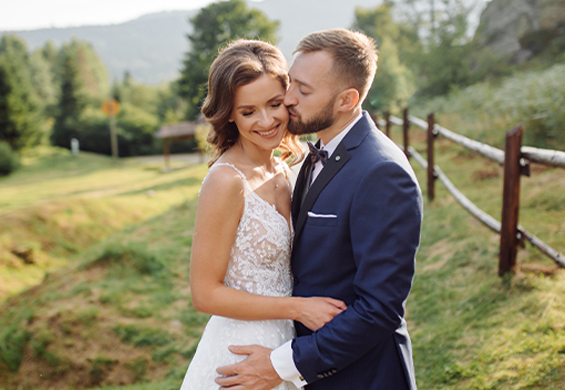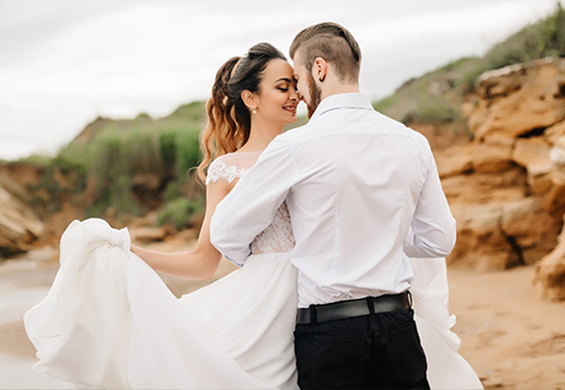Bengaluru, Goa, Hyderabad, Mumbai, Pune, Mysore, Chennai, Kerala

Adapting Wedding Planning for Multicultural Couples: A Comprehensive Guide
Weddings are a celebration of love and the union of two people, but when those two people come from different cultural backgrounds, the celebration can become even richer and more vibrant. Multicultural weddings bring together traditions, customs, and values from different parts of the world, creating a unique event that honors both heritages. But, as beautiful as they are, planning a multicultural wedding also comes with its challenges. This guide will help couples and planners navigate the complexities of multicultural weddings, ensuring that the big day is both inclusive and respectful to all traditions involved.
Understanding the Challenges of Planning a Multicultural Wedding
Multicultural weddings can present unique challenges, especially when trying to honor the traditions of both cultures.
Navigating Cultural Differences
It’s essential to understand the traditions and customs that are important to each partner. Take time to research each culture’s wedding practices and discuss which aspects hold the most significance for you both. This will lay the foundation for planning a ceremony that respects both backgrounds.
Balancing Family Expectations and Traditions
Family is often deeply involved in wedding planning, especially in cultures where traditions are highly valued. To manage expectations, communicate openly with both sides about what elements are non-negotiable and where there is room for compromise. It’s important to make decisions as a couple, while being sensitive to each family’s wishes.
Finding Common Ground Between Different Beliefs
For couples with different religious beliefs, blending a wedding can be tricky. Consider creating a ceremony that includes elements from both religions or having two separate ceremonies to ensure that each tradition is respected. Finding common symbols or rituals that both families appreciate can create a sense of unity.
Blending Cultural Traditions in Wedding Ceremonies
The ceremony is often the most significant part of a wedding, and it’s where many cultural elements come to life. Here’s how to blend traditions seamlessly:
How to Incorporate Multiple Cultural Rituals
One approach is to combine key rituals from each culture into one ceremony. For example, you might include a traditional blessing from one culture alongside a ring exchange from another. Alternatively, having separate mini-ceremonies allows each culture’s traditions to shine without feeling rushed or overshadowed.
Designing a Unified Ceremony That Respects Both Cultures
Consider writing a script for the ceremony that explains the significance of each tradition, making it meaningful for all guests. This approach helps everyone appreciate the customs being honored, especially if some guests are unfamiliar with the other culture’s practices.
Examples of Blended Ceremonies
Hindu-Christian Weddings: A Christian wedding ceremony can be followed by a Hindu fire ritual, symbolizing the merging of the two traditions.
Jewish-Muslim Weddings: The couple might incorporate the breaking of the glass along with the reading of a Nikah, creating a beautiful blend of traditions.
Western-Chinese Weddings: A Western-style vow exchange can be complemented with a traditional Chinese tea ceremony to honor elders.
Choosing the Right Venue for a Multicultural Wedding
Finding the perfect venue is crucial when planning a multicultural wedding:
Venues That Accommodate Cultural Needs
Look for venues that are flexible in allowing cultural or religious ceremonies. Some venues may have restrictions on certain customs, such as open flames for Hindu rituals or specific food requirements. Make sure to clarify these needs early in the planning process.
Outdoor vs. Indoor: What Works Best?
Outdoor venues can provide more flexibility, especially if your ceremony involves traditional music or dance that might require extra space. However, indoor venues can offer privacy and control over the environment, which can be beneficial for religious ceremonies.
Understanding Venue Restrictions
If you’re planning a wedding that involves specific religious practices, make sure the venue is comfortable with these traditions. For example, some places of worship may have restrictions on music or require certain dress codes, while others might have rules about food or alcohol.
Multicultural Wedding Attire: Embracing Diversity in Style
What you wear on your wedding day can be a powerful representation of your cultural heritage:
Traditional vs. Modern Wedding Outfits
You can choose to wear traditional attire from both cultures during different parts of the wedding day or mix and match elements from each. For example, the bride might wear a traditional red sari for a Hindu ceremony and then change into a white gown for a Western reception.
Combining Cultural Attire: Ideas for Blended Looks
Another idea is to incorporate details from both cultures into a single outfit. A groom could wear a traditional sherwani with a boutonniere, or a bride might pair a Western-style dress with traditional jewelry.
Coordinating Outfits for Cultural Ceremonies
If each partner is wearing attire from their respective cultures, coordinate the colors and styles to create a cohesive look. This way, both traditions are honored while maintaining a sense of unity in the visual presentation.
Conclusion
Planning a multicultural wedding is about celebrating love while honoring the diversity that makes each couple unique. By blending traditions, respecting each other’s values, and finding creative ways to merge cultures, you can create a wedding day that’s not only beautiful but deeply meaningful. The key is to focus on what matters most to you as a couple and to create a celebration that tells your love story in a way that resonates with both of your heritages.




